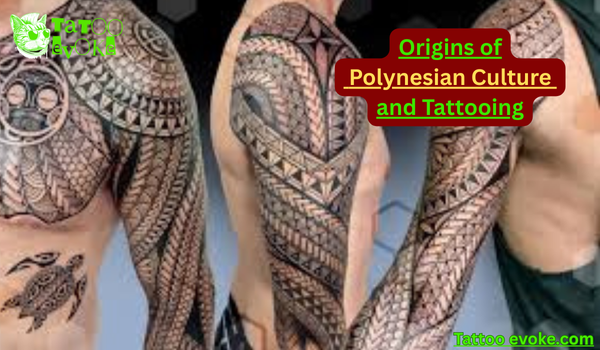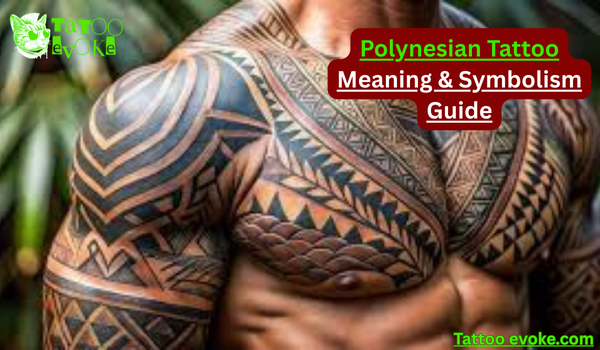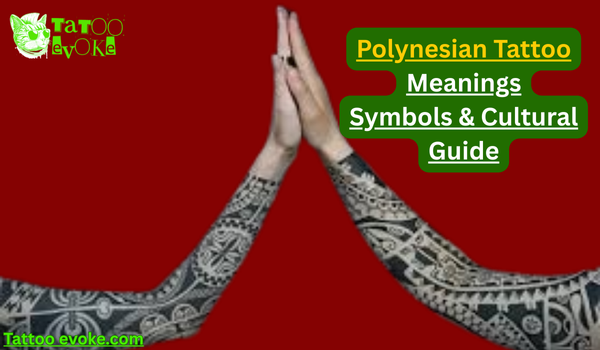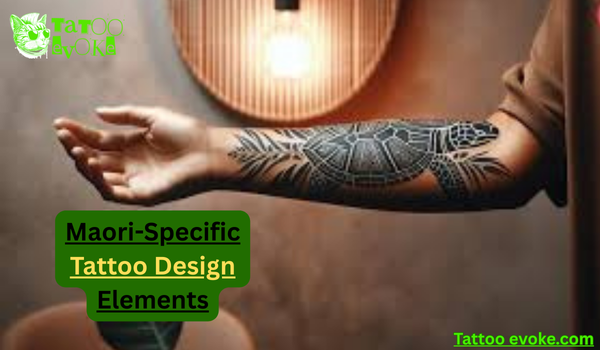Introduction: More Than Ink – Stories Written in Sacred Symbols
Picture this: every line etched into your skin tells the story of your ancestors, your spiritual journey, and your place in the universe. For over 3,000 years, Polynesian tattoos have transformed human bodies into living manuscripts of cultural identity and spiritual power.
In the vast Pacific Ocean, where ancient navigators sailed by starlight, tattoos emerged as humanity’s most meaningful art form. Each design carries the weight of tradition, ancestral wisdom, and mana—the spiritual force connecting every Polynesian to their land, ocean, and heritage.
From the intricate spirals of Maori Ta Moko to the bold geometric patterns of Samoan pe’a, these aren’t decorative pieces. They’re sacred bridges between the physical and spiritual worlds, carrying profound Polynesian tattoo meanings that have survived centuries of cultural change.
Which aspect of Polynesian tattoo culture speaks most deeply to your own personal journey?
Origins of Polynesian Culture and Tattooing: A Maritime Legacy

The Greatest Ocean Adventure in Human History
Over 3,000 years ago, skilled navigators from Southeast Asia embarked on epic Pacific voyages, settling scattered islands across an area larger than most continents. This incredible journey created Polynesia—a vast cultural region encompassing:
- Over 1,000 islands within the Polynesian Triangle
- Stretching from New Zealand to Hawaii to Easter Island
- Home to diverse cultures including Marquesans, Samoans, Tongans, Hawaiians, Tahitians, and Maori
Shared Cultural DNA Across the Pacific
Despite thousands of miles of ocean separating them, Polynesian peoples share remarkable similarities:
Common Language Roots:
- Belong to the Malayo-Polynesian language group
- Share ancestral origins from Southeast Asia
- Two universal words unite all cultures: “moana” (ocean) and “mana” (spiritual energy)
Sacred Ocean Connection: The ocean isn’t just a physical barrier—it’s a spiritual highway connecting communities, ancestors, and divine realms. Polynesians believe the ocean guarantees life itself.
Tattoos as Living History
In ancient Polynesian society, tribal tattoo symbolism served multiple purposes:
- Personal identity markers showing personality and status
- Social hierarchy indicators within community structures
- Genealogical records preserving family lineage
- Spiritual protection connecting wearers to divine forces
Since traditional Polynesian cultures had no written language, tattoos became distinctive signs expressing identity and personal stories through sacred body art.
The History of Polynesian Tattoos: From Sacred Ritual to Global Art
European Contact Changes Everything
1595: First European Discovery Spanish navigator Alvaro de Mendana de Neira discovered the Marquesas Islands, but showed little interest due to lack of valuable resources.
1771: The Pivotal Moment Captain James Cook’s return from Tahiti and New Zealand changed tattoo history forever:
- Introduced Europe to the word “tattoo” (from Polynesian “tattaw”)
- Brought Tahitian man Ma’i to Europe, whose tattoos fascinated society
- Sparked rapid spread of tattooing interest throughout Europe
The Cultural Suppression Period
18th Century Challenges:
- Christian missionaries banned tattooing operations
- Many traditional practices were lost or driven underground
- Sacred knowledge nearly disappeared in some regions
Modern Revival (1980s-Present):
- Lost arts slowly being revived by cultural practitioners
- Practical challenges with sterilizing traditional tools
- Ministry of Health banned traditional methods in French Polynesia (1986)
- Contemporary artists blend traditional techniques with modern safety
How do you think ancient tattoo traditions can best be preserved while adapting to modern safety standards?
Meaning of Tattoo Placement on the Body: Your Spiritual Map
The Sacred Body Canvas
In Polynesian tattoo culture, your body represents the sacred link between Rangi (Heaven) and Papa (Earth). Humans are descendants of these divine entities, eternally seeking spiritual reunion through earthly experiences.
Upper Body: The Spiritual Realm
Connection to Divine Forces:
- Head: Spirituality, knowledge, wisdom, intuition
- Chest/Upper Trunk: Generosity, sincerity, honor, reconciliation
- Upper Arms/Shoulders: Strength, bravery, warrior spirit
Lower Body: The Earthly Realm
Material and Physical Connections:
- Lower Trunk/Core: Life energy, courage, independence, sexuality
- Thighs: Strength and marriage bonds
- Stomach/Navel: Personal mana and independence
- Legs/Feet: Forward movement, transformation, progress
Symbolic Directions and Gender
Gender Associations:
- Left side: Traditionally associated with women
- Right side: Connected to men
- Back: Represents the past and ancestry
- Front: Symbolizes future and potential
Joint Meanings: Joints represent union and contact between life aspects, symbolizing relationship degrees within Polynesian society’s community-focused structure.
Polynesian Tattoo Styles: Five Distinct Regional Traditions

Understanding Polynesian tattoo history requires recognizing the unique characteristics of each regional style.
1. Maori Style (New Zealand)
Key Features:
- Rich round elements and intricate spirals
- Important use of blank/negative space
- Highly decorative with spiraling thin lines
Cultural Significance:
- Ta Moko: Sacred facial tattoos
- Kirituhi: Body tattoos (Kiri = skin, Tuhi = art)
2. Marquesan Style
Key Features:
- Geometrical with large solid black areas
- Darkest of all Polynesian styles
- Men: Asymmetrical designs / Women: Symmetrical patterns
Historical Context: Around 200 AD, this became one of Polynesia’s most complex cultures, creating elaborate full-body designs.
3. Samoan Style
Key Features:
- Rectilinear, geometrical, repetitive patterns
- Highly symmetrical body sides
- 2,000+ years of unbroken hand-tattooing tradition
Cultural Elements:
- Pe’a: Male version with solid areas
- Lighter designs: Traditional female version
- Tufaga: Hereditary tattoo artists
4. Tahitian Style
Key Features:
- Highly figurative with smooth, rounded elements
- Naturalistic approach blending traditional and modern
- “Wow factor” contributing to modern popularity
5. Hawaiian Style
Key Features:
- Highly geometric with repetitive patterns
- Emphasis on traditional roots and cultural authenticity
- Revived through practitioners like Keone Nunes
Symbols and Their Sacred Meanings: The Language of Polynesian Tattoos

Human Connection Symbols
Enata (Human Figures)
- Meaning: Represent men, women, gods, and relationships
- Placement significance: Upside-down = defeated enemies
- Group formations: Semi-circle rows = ancestors protecting descendants
Protection and Strength Symbols
Shark Teeth (Niho Mano)
- Spiritual significance: Aumakua (guardian spirits) often appear as sharks
- Symbolic meanings: Protection, guidance, strength, ferocity, adaptability
- Design variations: Simplified and complex versions available
Tiki Figures
- Representation: Semi-gods, deified ancestors, priests, chiefs
- Symbolism: Protection, fertility, spiritual guardianship
- Key feature: Eyes as dominant elements (“brilliant eye” design)
Nature and Life Symbols
Ocean and Wave Designs
- Cultural importance: Ocean as “second home” and final resting place
- Symbolic meanings: Life continuity, change, death passage, spiritual journey
- Design significance: Represents life’s flow and eternal cycles
Turtle (Honu)
- Universal meanings: Health, fertility, longevity, foundation, peace
- Cultural connection: Guided Polynesians to Hawaiian Islands
- Family symbolism: Joining and unity (Marquesan “hono” = stitching families together)
Lizards and Geckos (Mo’o/Moko)
- Mythological role: Gods and spirits appearing in lizard form
- Dual nature: Good luck communicators with gods / Bad omens for disrespectful people
- Spiritual access: Bridge between human and invisible worlds
Warrior and Leadership Symbols
Spearheads
- Primary meanings: Warrior nature, courage, fighter spirit
- Extended symbolism: Protection, defense of family/community
- Animal connections: Represents stings of various creatures
Sun Symbolism
- Leadership qualities: Riches, brilliance, grandness, leadership
- Spiritual significance: Eternity, rebirth, continuous life cycles
- Daily connection: Periodic rising as renewal symbol
Additional Sacred Symbols
- Stingrays: Adaptation, stealth, protection through camouflage
- Seashells: Shield, protection, intimacy
- Marquesan Cross: Universal harmony and elemental balance
- Manaia: Spiritual guardian with supernatural powers
Traditional Tools and Tattooing Techniques: Sacred Craftsmanship
Time-Honored Tools Preserving Ancient Wisdom
Samoan Tools (Au):
- Construction: Sharpened boar’s teeth + turtle shell portions + wooden handles
- Training method: Hours/days tapping designs into sand or bark-cloth
- Cultural importance: Honoring 2,000+ year traditions
Maori Tools (Uhi):
- Materials: Shark teeth, sharpened bone, sharp stones
- Primary tool: “Uhi” chisel from albatross bone or iron
- Technique variety: Plain/smooth or serrated, used interchangeably
Natural Inks and Sacred Storage
Traditional Pigment Sources:
- Black pigments: Burnt wood (reserved for sacred facial tattoos)
- Lighter pigments: Infected caterpillars or burnt kauri gum + animal fat
- Sacred storage: Ornate containers “oko” becoming family heirlooms
Master-Apprentice Heritage System
Knowledge Preservation:
- Hereditary skill transfer through generations
- Father-to-son learning relationships
- Cultural knowledge + spiritual understanding + proper protocols
- Unbroken Samoan tradition spanning 2,000+ years
Pain, Process, and Healing: The Sacred Ordeal

More Than Art – A Spiritual Transformation
Traditional Polynesian tattooing represented profound spiritual ritual testing endurance and cultural commitment.
The Sacred Challenge
Cultural Significance of Pain:
- Extreme pain held deep spiritual meaning
- Permanent marks commemorated endurance and dedication
- Risk of death by infection was genuine concern
Social Consequences:
- Shying away = labeled “pala’ai” (coward)
- Incomplete tattoos = wearing shame marks for life
- Community rejection for those unable to complete process
Traditional Pe’a Process
Session Structure:
- Duration: Until dusk or pain became unbearable
- Recovery: Resume next day unless skin needed healing time
- Timeline: Complete process lasting 3-4 months
- Celebration: Family parties marking completion
- Ceremony: Tufaga smashing water vessel to end ordeal
Healing and Community Support
Physical Recovery Process:
- Salt water washing preventing infection
- Regular massage removing impurities
- Family assistance for basic daily tasks
- Six months for designs to appear clearly
- Full year for complete healing
Maori-Specific Sacred Protocols
Unique Cultural Requirements:
- No hand-eating during process
- Limited communication with non-participants
- Sexual abstinence for facial tattoo recipients
- Wooden funnel feeding preventing skin contamination
- Deep groove creation differing from needle techniques
Maori-Specific Tattoo Design Elements: The Language of Ta Moko
Fundamental Design Architecture
Manawa Lines (Heart Lines):
- Meaning: Main flowing lines representing life journey
- Symbolism: Your heart, life path, and earthly time
- Function: Foundation structure for all other elements
Koru Spirals:
- Natural inspiration: New Zealand fern plant shoots
- Representation: People and relationships in life journey
- Personal connection: Adding important people (family, friends, loved ones)
Traditional Infill Pattern Meanings
Each pattern carries specific cultural significance:
| Pattern | Meaning | Symbolism |
|---|---|---|
| Pakati | Dog skin cloak | Warriors, battles, courage, strength |
| Hikuaua | Taranaki region | Prosperity, mackerel tail patterns |
| Unaunahi | Fish scales | Abundance and health |
| Ahu Ahu Mataroa | Athletic achievement | Talent in sport, new challenges |
| Taratarekae | Whale teeth | Marine strength and endurance |
Sacred Guardian Elements
Manaia (Spiritual Guardian):
- Form: Bird head + man body + fish tail
- Function: Provider and protector over sky, earth, sea
- Personal connection: Like protective bird on shoulder
Hei Tiki (Fertility Symbol):
- Cultural meaning: Good luck charm and fertility symbol
- Spiritual significance: Represents unborn human embryo
- Family heritage: Greenstone carvings passed through generations
Facial Tattoo (Ta Moko) Identity System
Traditional Maori facial tattoos served as complete identification systems:
Eight Facial Sections with Specific Meanings:
- Ngakaipikirau (forehead center): General rank
- Ngunga (under brows): Social position
- Uirere (eyes/nose area): Sub-tribe rank
- Uma (temples): Marital status and marriage count
- Raurau (under nose): Personal signature
- Taiohou (cheek): Nature of work/profession
- Wairua (chin): Personal mana and prestige
- Taitoto (jaw): Birth status and heredity
Ancestral Representation:
- Left side: Father’s lineage
- Right side: Mother’s lineage
- Untattooed sides: Indicating lack of rank in that ancestral line
Modern Revival and Cultural Respect: Navigating Sacred Traditions
The Renaissance Movement (1980s-Present)
Revival Efforts:
- Cultural practitioners, researchers, and artists working together
- Traditional practices returning with modern safety adaptations
- Both men and women now participating in sacred traditions
Maori-Specific Revival:
- Te Uhi a Mataora organization preserving Ta Moko traditions
- Modern machines used while maintaining traditional designs
- Living art form continuing cultural development
Cultural Appropriation vs. Appreciation
Key Considerations for Respectful Practice:
✅ Appropriate Approach:
- Research cultural significance of chosen symbols
- Work with knowledgeable Polynesian tattoo artists
- Understand difference between appreciation and appropriation
- Consider modern interpretations honoring tradition
❌ Avoid These Practices:
- Using sacred symbols reserved for specific cultural roles
- Claiming cultural identity through tattoo designs
- Copying traditional designs without understanding meanings
The Dwayne Johnson Example
Actor Dwayne Johnson’s Polynesian tattoo sparked important cultural authenticity discussions:
- Background: Samoan heritage with primarily Marquesan-style elements
- Community response: Generally accepted as sincere cultural appreciation
- Key lesson: Respectful cross-cultural appreciation possible with proper understanding
Guidelines for Non-Polynesian Clients
Recommended Practices:
- Research thoroughly before choosing designs
- Collaborate with authentic Polynesian tattoo artists
- Choose “Polynesian-inspired” rather than traditional sacred designs
- Respect cultural boundaries around specific ceremonial symbols
- Understand personal meaning rather than claiming cultural identity
Conclusion: Honoring Sacred Traditions in Modern Times
Polynesian tattoos represent far more than stunning body art—they’re living connections to ancient wisdom, spiritual power, and cultural identity that have survived centuries of challenge and transformation.
Key Takeaways from Our Cultural Journey:
- Respect the sacred nature of Polynesian tattoo traditions and meanings
- Understand placement significance and how body areas connect to spiritual realms
- Appreciate regional diversity across Maori, Samoan, Marquesan, Tahitian, and Hawaiian styles
- Recognize symbol importance and the deep cultural stories they carry
- Support cultural preservation through respectful appreciation and authentic practices
Whether you’re drawn to the aesthetic beauty, spiritual significance, or rich cultural depth of Polynesian tattoos, approaching these traditions with proper respect, understanding, and appreciation ensures they continue thriving for future generations.
Remember: every line, symbol, and pattern carries ancestral knowledge and spiritual significance. By honoring these traditions with the reverence they deserve, we help preserve humanity’s most meaningful art forms while celebrating the incredible cultural heritage of Polynesian peoples.
The ocean connects all things, just as these sacred tattoos connect us to the eternal wisdom of Polynesian culture.
FAQs
Q: Can I bring my own Polynesian tattoo design?
A: Yes, but collaborate with experienced Polynesian artists to ensure cultural appropriateness and proper symbolism. They’ll help create meaningful, respectful designs.
Q: What do different Polynesian tattoo symbols mean?
A: Symbols represent life aspects including ancestry, nature, spirituality, and achievements. Common examples: Tiki (protection/fertility), shark teeth (strength/guidance), waves (life continuity), turtles (longevity/peace).
Q: How long does a Polynesian tattoo take?
A: Depends on size, complexity, and placement. Simple designs: few hours. Elaborate pieces: multiple sessions over weeks/months. Traditional Samoan pe’a historically required 3-4 months.
Q: Traditional vs. modern Polynesian tattoo techniques?
A: Traditional used hand tools (bone combs, chisels, natural inks). Modern uses tattoo machines for safety/precision. Some practitioners still use traditional hand-tapping with modern sterilization.
Q: What are the main Polynesian tattoo style differences?
A: Five main styles with distinct characteristics: Maori: Spirals and negative space Marquesan: Large black geometric blocks Samoan: Symmetrical geometric patterns Tahitian: Traditional + realistic elements blend Hawaiian: Geometric repetition focus
Share Your Sacred Journey
We’d love to hear from you!
- What Polynesian tattoo symbols resonate most with your personal story?
- Are you considering a Polynesian-inspired tattoo? Share your research journey in the comments below.
- Pin this comprehensive guide to save for future reference when planning your meaningful tattoo journey.
Explore More Cultural Tattoo Meanings: Continue your tattoo culture education by exploring our complete guides to traditional tattoo meanings from cultures worldwide. Knowledge and respect create the foundation for truly meaningful body art.
